Welcome to Bourbon and Rye Week!
To Begin This Week of Whiskey Content, A Walk Down the American Whiskey Revival Memory Lane.
Six months ago, I kicked off The Mix’s inaugural Gin Week with a remembrance of a trip to LeNell’s, a small liquor store that had a short, but influential run in Red Hook, Brooklyn, during the aughts. I beg the reader’s patience as I begin the first ever Bourbon and Rye Week in a similar fashion.
You see, LeNell’s was a nexus of spiritous discovery during its short life, and just as I caught wind of a coming gin revival there, so did I learn that Bourbon and rye were poised for a comeback.
LeNell’s may have been the place where I first encountered and sampled rye whiskey. Rye wasn’t exactly prevalent back then. It didn’t stare you down from the shelves of your local liquor store. And it was nowhere to be found at your favorite bar. So vanished were calls for rye whiskey among drinkers that there were a total of three brands on the market then: Jim Beam Rye, Wild Turkey Rye 101 and Old Overholt. They were all dirt cheap and, if a liquor store carried them at all, they were on the bottom shelf. You could write your name on them, tracing your finger through the gathered dust.
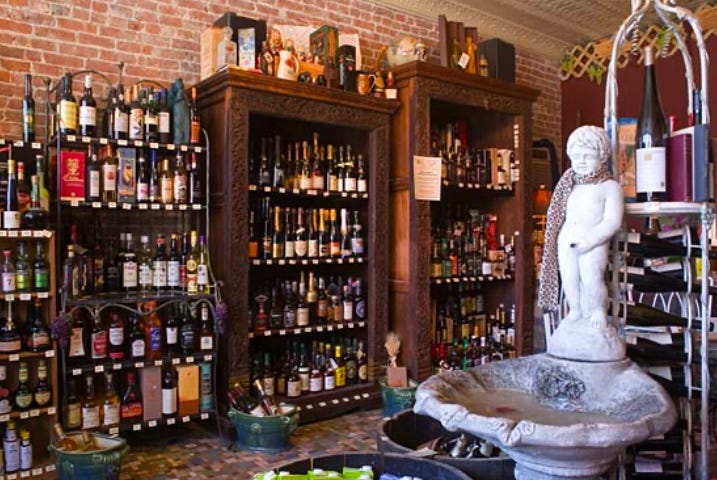
As for Bourbon, it was certainly faring better than rye. People drank it. But it had nothing close to the visibility of Scotch, particularly single-malt Scotch, which was still riding a tidal wave of popularity that had begun in the 1990s.
People who cared about Bourbon ordered Maker’s Mark, the fancy stuff with the red wax cap that was slightly more expensive. The other prominent brands—again, Jim Beam and Wild Turkey, as well as Evan Williams, Old Grand-Dad and a few others—were thought of as workhorses. And none of them were being put to particularly great use in cocktails yet; the roaring return of classic cocktails like the Old-Fashioned and the Manhattan was still a few years off. If you ordered an Old-Fashioned, there was a good chance it would be made with Canadian whiskey blends like Seagram’s or Canadian Club.
But there were a few people who knew that Bourbon and rye were vastly undervalued. One was LeNell Smothers (now LeNell Camacho Santa Ana), the owner of LeNell’s. Her store had the best selection of Bourbon and Rye in New York City. She was so invested in the future of rye that she journeyed down to the Willett distillery in Kentucky and picked out her own barrels of well-aged whiskey. She bottled it under her own label, Red Hook Rye, and sold it in her store.
It was a crazy move at the time. Nobody was doing such things. (It is now a common practice. Joe’s Diner down the street from your house probably has its own barrel pick.) But she was well ahead of her time. Today, remaining bottles of Red Hook Rye are among the most sought after, expensive bottles of booze in the world.
I saw the original Red Hook Ryes with my own eyes. The whiskey was barrel proof—another thing that was hard to understand at a time when most American whiskeys were 45% abv or less. It had an illustration of a muscled arm on the label. I balked at the price: $75! I could not afford that; I made about $600 a week after taxes. (Yes, readers, in the aughts a family of three could live comfortably in Brooklyn on such a salary.)
Of course, I regret not buying those bottles now; I could retire on them; but, thanks to a couple generous friends, I have tasted the ryes on two occasions. They are excellent.
But here’s the thing. A lot of rye brands are excellent now. Bourbons, too. That’s because that little shop and those bottles were just the beginning of what would be a decades-long boom of interest in the production and consumption of American whiskey. That boom has slowed down a bit lately, but you wouldn’t know it when visiting the liquor store, where the shelves are lousy with choice; or the book store, there the number of volumes dedicated to Bourbon or rye has skyrocketed. (I’ve got one of my own coming out next year. It will be called Bourbon and Rye Cocktails.)
I lived and wrote through that American whiskey renaissance. Here are a few of my recollections.
Welcome to Bourbon and Rye Week at The Mix, a week dedicated to the most versatile of brown cocktail spirits and my favorite brown spirit to boot!
Get ready for all sorts of Bourbon and Rye coverage. There will be a new article every day. I’ll take you to the best whiskey bar in Brooklyn; clue you into the greatest stop on the American whiskey trail (hint: it’s not in Kentucky); do some deep dives into whiskey cocktail history; and Q&A’s with prominent whiskey figures. There will be a post every day between now and Sunday, so be prepared for some emails.
We’ll start with a very personal chronicle of the roots of the Bourbon and Rye revival, as told by yours truly. But, first, an offer:
Here at The Mix, we are grateful to have a large group of subscribers—and quite a few new free subscribers who have all joined within the last few weeks.
We appreciate all of you and hope that this week you really enjoy the Bourbon and Rye articles, interviews, recipes and round-ups we have in store.
During Bourbon and Rye week, if you decide to become an annual member, we are offering 20% OFF if you click on the link below. The secret password is WHISKEY.
Bourbon and Rye Week Annual Subscription Sale!!
Thanks from The Mix!
LeNell had a keen interest in any new American whiskey that came down the pike. I remember one time she hosted a tasting of a new whiskey at a bar down the street from her store on Van Brunt Street. It was called Bernheim Original Wheat Whiskey.
Bernheim was the sort of product that made a budding spirits writer like myself realize I didn’t know nothing about nothing. Who was Bernheim? What was wheat whiskey? How was it different from Bourbon and Rye?
I had the answers by the end of the tasting. The whiskey was wonderful, soft on the palate and different from any other American whiskey I’d had. That was because, I quickly learned, wheat made for a softer whiskey than did corn (sweet) or rye (spicy).
Maker’s Mark has a good bit of wheat in its mash bill, which explained why it was so easy on the palate. Oh, and “mash bill” was a term we all quickly learned back then, as well as “sour mash” and “mash tun.” There was a lot of mash going around.
Bernheim was made by Heaven Hill, a family-owned distillery founded in 1935. It tended to keep a low profile until the advent of the American whiskey and cocktail revivals. After that, however, it seemed like all the whiskeys cocktail bartenders were putting into drinks—the unglamorous ones that were secretly excellent and also affordable—came out of Heaven Hill.
Elijah Craig Bourbon, which was the well Bourbon at Milk & Honey in its early years, was made by Heaven Hill. It was 12 years old and it was dirt cheap. Within a few years, everyone caught on and drank through all the Elijah Craig, causing the age of the juice to plummet from 12 to fewer that 8. After that, Henry McKenna 10-year-old became the rage. It was also made by Heaven Hill and was dirt cheap. Until a run on the product made sure it wasn’t cheap anymore.
Heaven Hill was also the home of the most celebrated rye whiskey of the early years of the rye revival. Heaven Hill had bought the brand in 1993. It was the only bottled-in-bond (that is, 50% abv) rye around.
Rittenhouse Rye was a brand nobody talked about or drank until around 2005. It was just sitting around Kentucky being old, bonded and delicious. Then some of the cocktail world’s leading lights started demanding it be sold in New York. They wanted to make old cocktails with good rye. Finally it was listed in New York State and bars could buy it.
If you were a cocktail bar in 2009 and didn’t have a Rittenhouse Rye drink on your menu, you just weren’t considered a serious cocktail bar.
I can tell you, Rittenhouse Rye was the first brand that made me love rye. It helped me understand how its use in a classic whiskey cocktail could transform that recipe from something merely good to something remarkable. Before that, rye struck me as a rough, harder-to-like style of whiskey.
Everyone got in on the rye game in those early heady years. Bartenders all over New York invented new rye cocktails by the dozens. Some have stayed with us, like the Black Manhattan, Greenpoint, Red Hook, Trinidad Sour and Final Ward. Garrett Oliver, brewmaster at Brooklyn Brewery, made a beer that tasted like a Manhattan by aging thirty percent of the beer in rye barrels from Rittenhouse.
Eventually, of course, the usual cycle repeated itself: we drank it all and the age of the juice used in Rittenhouse went down to meet demand. Rittenhouse was still good, just not as amazing. The Bourbon and Rye revival was its own worst enemy.
Soon, bars that catered to the American whiskey enthusiast began to pop up across the nation. The one closest to my apartment was called Char No. 4. Bourbon, by law, had to be aged in new white oak barrels that were charred on the inside. There were four levels of char you could get. Char No. 4 was named after the deepest char. The bar’s name was a dog whistle for whiskey superfans.

Char. No. 4 opened in 2008. It boasted more than 150 brands of whiskey. Most of them were displayed and backlit on a towering series of shelves behind the bar. They were arranged alphabetically, not by whiskey type. It made for a soothing sight, all that white light flowing through amber liquid. It was a look that would be duplicated by many more whiskey bars to come.
One could buy a sample of any of the bottles in 1-ounce and 2-ounce servings. The 1-ounce option was there because some of these bottles were expensive. Also, people went to Char. No. 1 not to get a buzz on, but to taste and learn about whiskey. That was new.
LeNell Smother's own Red Hook Rye was available at $75 a shot.
The aughts were a time when you suddenly were able to meet Bourbon and rye distillers. Until then, few people knew such professionals existed. Fewer still went out of their way to meet them. It was just like chefs in the ‘80s and ‘90s. Once upon a time, there was a person in the kitchen that made your meal. You didn’t know their name; you didn’t meet them; you never read about them. And then, suddenly, there were celebrities.
Now that was happening to whiskey distillers. They went from working grunts to globe-trotting icons nearly overnight. Journalists were invited to go down to Kentucky to meet the distillers. Other times, the distillers came to New York to meet the journalists.
The latter encounters always struck me as scenes out of some fish-out-of-water Frank Capra film from the 1930s. You know, “Mr. Bourbon Goes to New York,” that kind of thing. The distillers, dressed in their casual country best, charmed you with their folksy ways and made you feel a bit sheepish about your self-conscious, citified sophistication. Of course, as a reporter, I never forgot these were also representatives of huge, multi-million-dollar companies. They represented long-standing tradition, yes, but that tradition was a business, one getting bigger by the year.
Still, it was undeniably thrilling to meet these master distillers face to face. When I first visited the Wild Turkey distillery in Lawrenceburg, Kentucky, in 2012, I was given a tour—all by my lonesome—by none other than Jimmy Russell. Russell began his career at Wild Turkey in 1954 and is still at it today. In an industry full of legends, he is in a class by himself. He’s also incredibly nice. On the day of my tour, he acted like nothing more than a humble employee rolling out the welcome mat. It’s a wonder to me that I’ve shared a drink with him on multiple locations. It’s sort of like saying you used to play catch with Joe DiMaggio.
Often, meeting a distiller was akin to meeting the family. Over the years, Jimmy would often be joined by his son and heir apparent, Eddie. Then, one year, I attended a lunch with Jimmy and Eddie where we were joined by Eddie’s son Bruce. Similarly, Fred Noe, the great-grandson of Jim Beam, would eventually be joined at events by his son Freddie Booker Noe IV.
At these family occasions, I was usually the only one enjoying a cocktail. Everyone else took their whiskey straight.
Of all these roving, celebrity distillers, none was more visible than Dave Pickerell. With a belly as big as his cowboy hat was small, you couldn’t miss him. And miss him you didn’t, because he was at every convention, every tasting, every opening of every new whiskey bar.
He had the time to travel, because he wasn’t affiliated with any single distillery that kept him back on the ranch. He had made his name at Maker’s Mark, serving as distiller for 14 years until 2008. After leaving there, he had a hand in seemingly every new whiskey distillery to come along, a master distiller for hire.
He was on the ground floor of WhistlePig, now one of the most-recognized prestige ryes in the world. They made their propitious bow with a 10-year-old rye. That was a remarkable product at a time when new distilleries were rushing out whiskeys that were less than two years old. After an 18-month search, Pickerell had located a fantastic rye whiskey in Canada that was intended, as most Canadian ryes are, as a blending agent. WhistlePig said it was made in Vermont, but that was just feel-good marketing. Eventually, they came clean.
Pickerell was also the master distiller at Hillrock Distillery in the Hudson Valley, a posh estate funded by an investment banker named Jeffrey Baker. There, Pickerell pushed the modern notions of a Bourbon by using a solera system—a layering method of aging usually employed in the making of Sherry. He also insisted that whiskey can exhibit signs of terroir—a treasured concept in wine, but seldom associated with whiskey.
New ideas like that came along at a steady clip in those days where new Bourbons and ryes had to set themselves apart from the pack in some way. Pickerell was full of ideas, and full of gossip. I never met him when I didn’t walk away with both some fresh new industry knowledge or scuttlebutt. Unlike other distillers, he liked the city, and liked to hang out in bars and socialize with bartenders and the press. One of his last major projects, before he died in 2018, was creating a brand of blended whiskey for the heavy metal band Metallica. That was a pretty good measure of how Hollywood the Bourbon and rye business had gotten by that time.
My first trip to Kentucky, in 2008, took me to Woodford Reserve, a distillery owned and run by Brown-Forman, a company that also makes a little whiskey called Jack Daniels. Woodford, introduced in 1996, was at the forefront of the refashioning bourbon as a luxury product. Their whiskey came in flat, square vessels that had more in common with perfume bottles.
The road to Woodford passed through the rolling green pastures and white fences of horse county. There was money in those hills, most of it from owners who lived far across the sea. The stone buildings at Woodford were old—this had been the old Oscar Pepper Distillery in the early 1800s—but the insides were polished and the gift shop was well-stocked. Bourbon tourism was just around the corner.
Chris Morris, Woodford’s master distiller, was our host. Morris was the polar opposite of barrel-chested, folksy figures like Russell and Pickerell. He was slim, soft-spoken and bespectacled, like a kindly, but secretly strong-willed justice of the peace. Morris took me to a rickhouse (the warehouses where the whiskey was aged), drilled a hole in a barrel and let the deep orange-amber liquid pour out into a waiting glass. It was a magical sight. I’ve seen this done many times since. It’s always magical.
Brown-Forman was one of the few Kentucky distilleries to make its own barrels. It owned a cooperage. The next day, we went to tour it. Workers assembled fresh barrels out of wooden staves and metal hoops with little but huge wooden mallet and raw brawn. One after another, barrels were built. There have been coopers for millennia. In Kentucky, there were still a few. (Sadly, Brown-Forman recently sold its cooperage.)
The barrels were then rolled to another part of the warehouse, set on their side and given the proper inner char by being briefly lit up with an orange fireball of molten intensity. As a big business, bourbon had a romantic primitivism to it. Spirit in wood, aged til ready.
Woodford helped open my eyes in a different way at a 2011 event staged at the Plaza Hotel in New York. (Oh, how I miss the old days when the Plaza was a full-on hotel and a New Yorker could stroll into the lobby of the Plaza without being grilled about their intentions.) In order to write about Bourbon and rye, journalists had to understand where American whiskey had been during the previous 80 years.
To publicize Woodford’s latest release—the return to full-Bourbon status of the brand Early Times—the distillery pulled seven whiskies from the Brown-Forman library. They were:
King Kentucky Straight Bourbon Whiskey from the 1930s
Old Forester Kentucky Straight Bourbon Whiskey from the 1940s
Old Forester President's Choice Kentucky Straight Bourbon Whisky from the 1950s
Old Forester 86 Kentucky Straight Bourbon Whiskey from the 1960s
Frost 8/80 Dry White Whiskey from the 1970s
Jack Daniel's Old No. 7 from the 1980s
Woodford Reserve Distillers Select Kentucky Straight Bourbon Whiskey from the 1990s
Woodford Reserve Masters Collection Seasoned Oak Finish from the 2000s
The new/old Early Times, representing the current decade.
Whiskey doesn't age the way wine does; it pretty much stays as it was when bottled. But sometimes the way the whiskeys are made alters slightly over the years. Popular tastes change, and bottling proofs go up and down. So the main attraction here was three-fold: to taste whiskeys and whiskey styles that are no longer made; to taste extant whiskeys as they were made in the past; and to taste familiar whiskeys bottled at bygone proofs.
King came into the Brown-Forman fold when the company bought the old Lynndale Distillery (the distillery they use today) in 1923. It became a blended whiskey in the late '30s, and was a top seller for a while, before being retired in the 1960s.
President's Choice was produced from 1938 until 1969. It's named as such because this rendition of Old Forester came from barrels hand-selected by Brown-Forman president Garvin Brown II.
The continued rise of vodka and the white liquors in the late 20th century led to the creation of Frost 8/80. This was easily the strangest bottle of the tasting. Frost was an eight-year-old Bourbon that had been filtered of all color and brought down to 80 proof. (Hence, the name, 8/80.) It lasted only a short time on the shelves in the early 1970s.
Frost could be viewed as a harbinger of one of the weirdest whiskey trends of the early years of the American whiskey boom: the advent of White Dog as a commercial product.
White Dog is the liquor that comes straight off the still, before it is barreled. During the distillery tours that were now available to bar professionals, many bartenders and liquor writers got to taste White Dog for the first time. This was undeniably cool at the time and many of us convinced ourselves that White Dog was so good that it should be sold and mixed into cocktails. A lot of distilleries took us at our word.
I first tasted white dog at Woodford. I remember thinking it was moonshine and was going to blow the roof off my head. I was surprised when I tasted a delicate, fruity, multi-faceted liquor.
Soon after that visit, I began to see commercially released white whiskeys on the market, first, and most commonly, Death's Door from Wisconsin. When Buffalo Trace soon got into the game, it was a sure sign that white dog has hit the big time. Cocktails bars used it in cocktails. Some bars offered white whiskey flights.
I wrote a story about the White Dog phenomenon for the New York Times in 2010. Of the hundreds of booze stores I’ve written for the Times since 2009, it was the only one that was placed on the front page of the Food section. I remember my editor Pete Wells writing me and saying, “I’m glad we decided to put this story on the front.”
It was a fad. By 2015, most of the White Dog was off the market. People realized it was silly to pay the same amount for an unaged spirit that tasted better when it was aged. (Buffalo Trace seems to be the only major distillery to have stuck with it.)
Another trend born of distillery tours and early curiosity was overproof and cask-strength whiskey. Many bartenders thought the stuff they tasted right out of the barrel was better than the standard stuff, which was cut with water. Unlike White Dog, that trend has stayed and is still with us. There are dozens of overproof Bourbons and ryes on the market and they sell well. I wrote a story about this fad 2012 for the Times, as well. (It did not land on the front page of Food.)
Bourbon and rye were so hot in those days that my editors basically gave me a green light on any American whiskey story idea I pitched them.

There were new distilleries to visit as well. The Bourbon and Rye boom led to a Bourbon and Rye distillery boom. One of the first, and still one of the best, was the New York Distilling Company in Brooklyn, founded by Allen Katz and Tom Potter. Potter had helped found Brooklyn Brewery. Katz had been an in-house mixologist at the distributor Southern Wine & Spirits, among many other things. Their focus would be rye and gin, the twin darlings of the cocktail movement.
NYDC was able to illustrate how their rye performed in cocktails because the distillery had its own bar, called The Shanty. This was the latest innovation in distillery culture. First, you couldn’t enter a whiskey distillery unless you worked there. Then you could, but just to take a tour. Then you could take a tour and visit a tasting room and gift shop. Now, new laws made it possible for you to hang out at their bar as long as you wanted.
(In 2011, I wrote a story about The Shanty for the New York Times.)
New York Distilling Company was also a place where the old and new Bourbon and rye worlds overlapped. Potter and Katz, being very community minded, would often host the great distillers of Kentucky in seminar-like gatherings. There was always a healthy audience of bartenders and booze media present. It was there that I met for the first time some of the Bourbon distilling greats, among them Jimmy and Eddie Russell of Wild Turkey, and Jim Rutledge of Four Roses.
Each event was capped by NYDC distilling one barrel of whiskey according to the guest distiller’s recipe. That whiskey was then barreled and the barrel signed by anyone who happened to be there. I signed a few.
We hope you’ll tag along with us during Bourbon and Rye Week. There are many more articles to come. And, of course, there will be reviews of many, many Bourbons and ryes. Those start below.
Bourbon and Rye Reviews, Round 1
Old Grand-Dad 16yo Bourbon, Kentucky, 50% abv
Old Grand-Dad, one of the most familiar names in Bourbon, now owned by Jim Beam, doesn’t put out a lot of line extensions. For decades there have just been the standard (40% abv), the Bottle-in-Bond, and the 114 Barrel Proof versions. So the arrival of this 16-year-old last year was big news. It has a good nose of caramel, candy, spice and cherry. That cherry and caramel are repeated on the palate, which is slightly hot. The oak from the extended aging is definitely there and the heat lingers on the finish. There are interesting herbal notes, though one feels the juice should be more complex than it is. Perhaps the whiskey stopped maturing at a certain point on its long journey. Certainly good for mixing. Off topic: This may be the most gorgeous packaging I’ve ever seen for a Bourbon bottling. I’d like to have it as a poster for my wall.
Heaven Hill Grain to Glass Rye, Kentucky, 61.6% abv
Last year, the prolific and creative Heaven Hill distillery rolled out a collection of three new whiskeys called “Grain to Glass.” The idea was to focus on the specific grains that went into the making of the whiskey. Heaven Hill partnered with two
like-minded companies, Beck’s Hybrids and Peterson Farms. The results are excellent. The rye, distilled in 2017, was made of a mash bill of 63% rye, 24% corn, and 13% malted barley. The corn seed varietal in question was Becks 6158. Though there was not much on the nose, the taste packed a lot. It was very rye-forward, spicy, minty, like soil and hay after a rain. You really do get a markedly grain-to-glass flavor. Some of the spice hit may be coming from the high abv. It would make a great Julep.
Heaven Hill Grain To Glass Bourbon, Kentucky, 53.5%
The Bourbon in Heaven Hill’s Grain to Glass series was distilled in 2017 from a mash bill of 35% rye, 52% corn and 13% malted barley. Again, the corn seed varietal was Becks 6158. It smells of citrus, shaved dark chocolate, and charcoal, and tastes of candy and fruit, with a light mouth feel. It hits that seven-year-old sweet spot that often makes for delicious Bourbon. The flavor unfolds slowly, with notes of chocolate and spearmint as it unfolds. (There is also a Wheated Bourbon in this series, but we drank it all before we remembered to make any tasting notes. I think that review speaks for itself.)
Russell’s Reserve 10yo Bourbon, Kentucky, 45% abv
Another bottle that barely made it to the tasting is Russell’s Reserve. This brand’s Bourbon and rye may be the most undervalued deals in the American whiskey world. The Wild Turkey products has an impressive age statement (10 years and 6 years, respectively) and a very kind price point ($45 usually). It’s one of the last remnants of the glory days in the aughts when you could get well-aged Bourbon and rye for pocket change. The mash bill of the Bourbon is 75% corn. That comes off in the sweet, classic Bourbon nose. The liquid is mellow, with notes of vanilla, grass and peppermint, sweet but not too sweet, just really nice and satisfying. It is complex, but not complicated. The finish is warming, but not hot. Fit for both sipping and cocktails.
Old Fitzgerald Bottled-in-Bond, Fall 2024, Kentucky, 50% abv
Old Fitzgerald is one of the more storied Bourbon brands out there. Since 1999, it’s been made by Heaven Hill. It has been a Wheated Bourbon since the days when it was made by Pappy Van Winkle. The Fall 2024 edition was distilled in autumn 2013, making it an 11-year-old Bourbon. There is candy on the nose, which is not big. It has a forthright, downright delicious flavor, with plenty of fruit to balance out the wood, spice and toast notes. It is just on the edge of being over-aged, without falling over. And, while Wheated, it is not soft. Best for sipping or making a highball. Though we made a Manhattan with this post-tasting and it was superb.
Woodford Reserve Straight Rye, Kentucky 45.2% abv
Woodford Reserve products are among the stand bearers of the new American whiskey front, easily available, slightly more expensive, but also a cut above. Their rye is a 4-year-old made from a mash bill of 53% rye, 33% corn and 14% malted barley. That low rye content makes for a gentle whiskey. There’s a bit of tang on the palate, but also a lot of sweet. It’s a rye whiskey for Bourbon drinkers. Good for mixing.
Woodford Reserve Straight Bourbon, Kentucky, 45.2% abv
One of the first “premium” Bourbons out there, Woodford has always been a consistent and reliable product since it arrived in the 1990s. It’s six-years-old, made from a mash bill of 72% corn, 18% rye and 10% malted barley. Despite the low rye content, it has a peppery nose. The juice is rich, with notes of roasted corn, cherry, vanilla and marzipan. It’s a luxurious Bourbon, perfect for sipping or upgrading your Manhattans.
Odds and Ends…
Pableaux Johnson, a beloved New Orleans writer and photographer who was a well-known figure among food and drink media, died on Jan. 26. He suffered cardiac arrest while photographing a second-line parade in New Orleans. He was 59. Johnson, who was born Paul Johnson in Trenton, New Jersey, was well known for his red beans and rice meals to which he invited people from all around the city. A friend of The Mix, he contributed Crescent City insight to occasional posts that focused on New Orleans bar culture… Wolfgang Zwiener, a former Peter Luger waiter who went on to head up an international chain of popular restaurants called Wolfgang’s Steakhouse, died on Jan. 23. He was 85. His steakhouse at Park Avenue and 33rd Street in Manhattan contains one of our favorite restaurant bars… Bar Snack, the East Village cocktail bar, will host a pop-up of bartenders Eric Job and Daniella Solano from the Portland, Maine, bar Room for Improvement on Feb. 5 from 5-9 p.m.… Schmuck, the highly anticipated new Manhattan cocktail bars from two of the pivotal figures behind Two Schmucks in Barcelona, opened for business last week. The Mix swung by. Recommended cocktails include the Schmuck Martini and Patio Pounding Pear (tequila and “a ton of pear,” with cheese served on the side)… David Wondrich wrote about the current state of modern cocktails for Punch… Aaron Goldfarb wrote about the origins of one of the most infamous drink orders in film history for Vinepair.
Don’t forget the sale! Join the Mix as a paid subscriber this week and get 20%!
⬇️⬇️⬇️⬇️⬇️⬇️⬇️⬇️⬇️⬇️⬇️⬇️⬇️⬇️⬇️




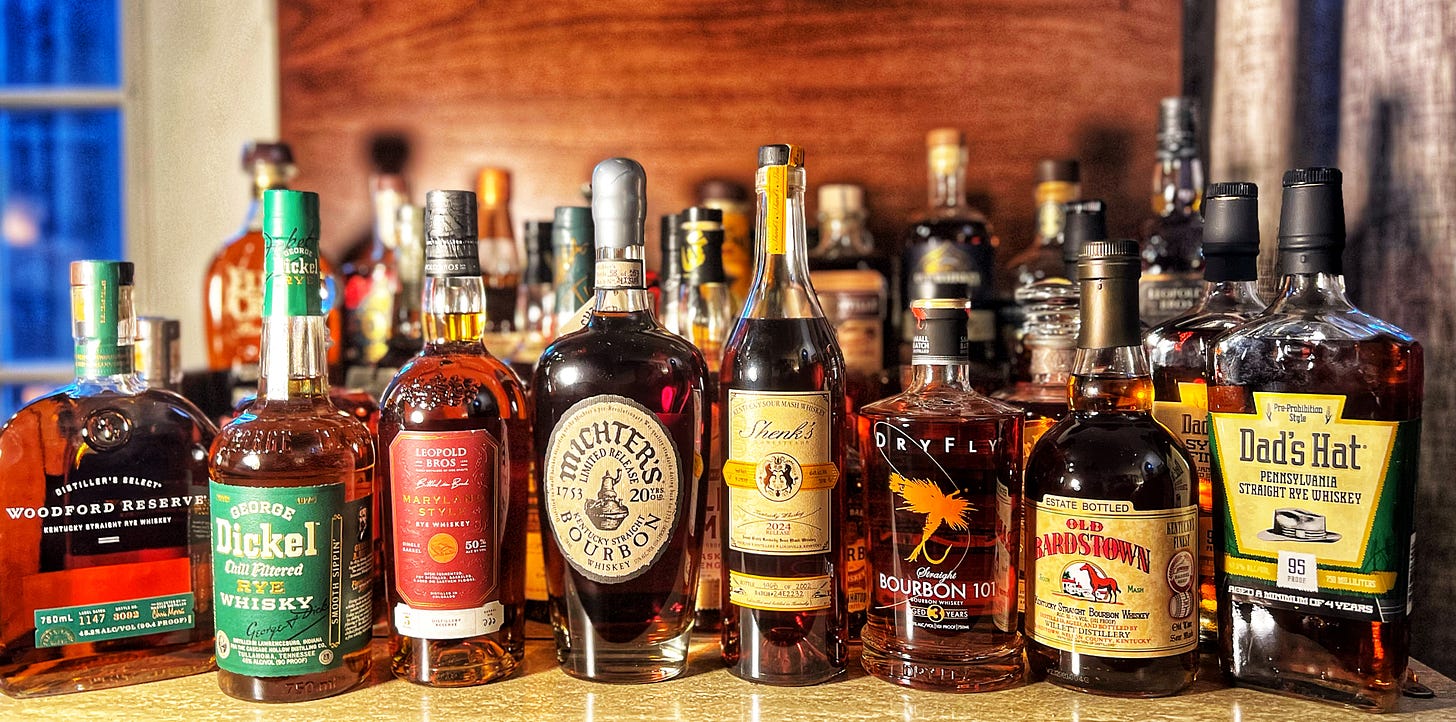

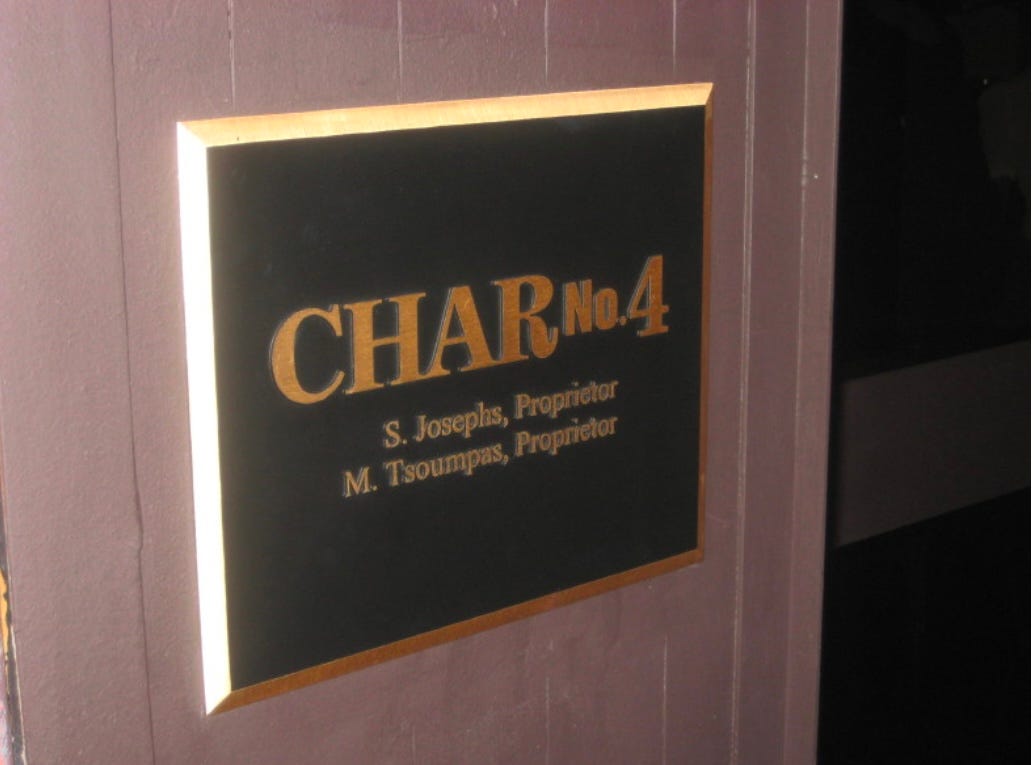

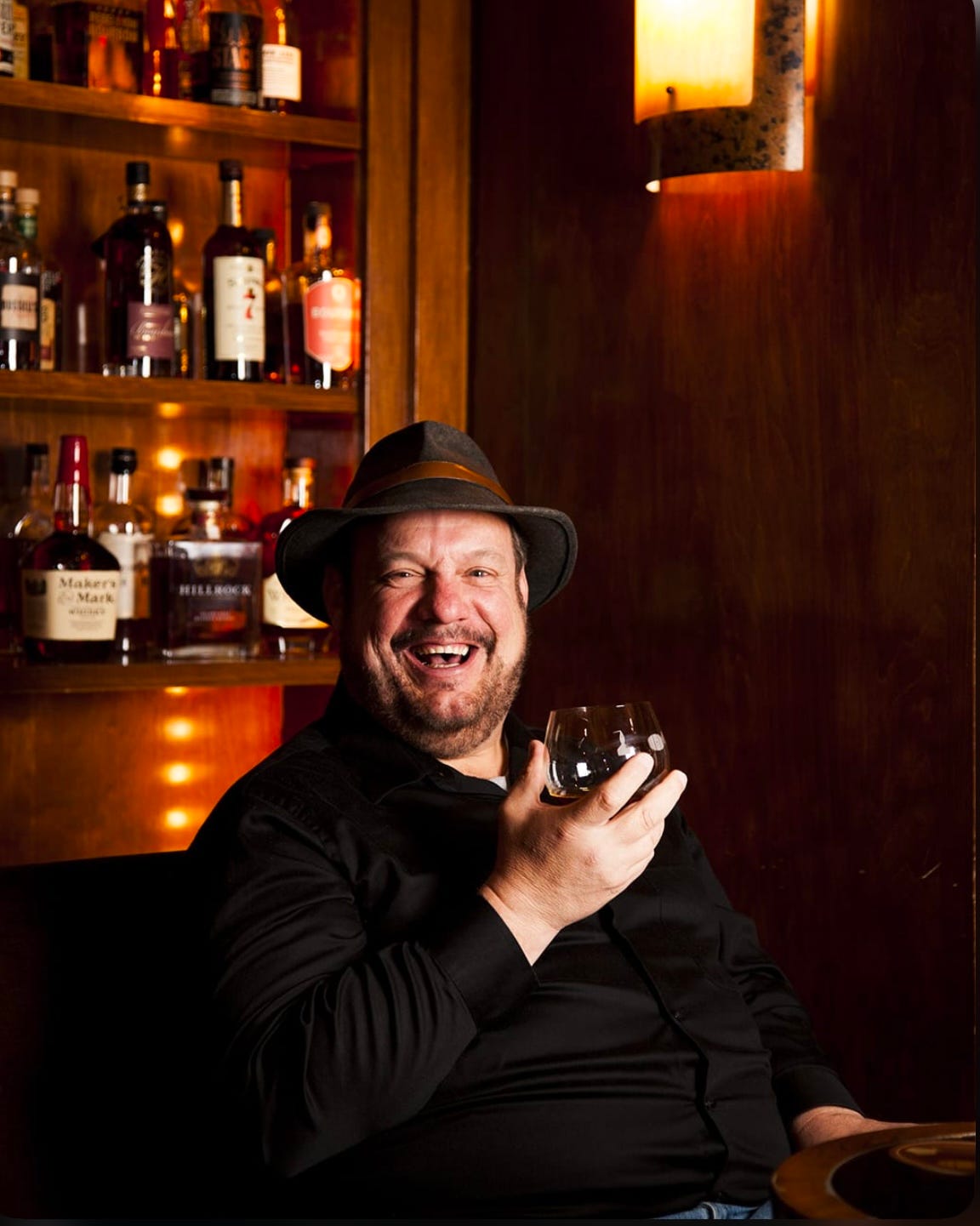

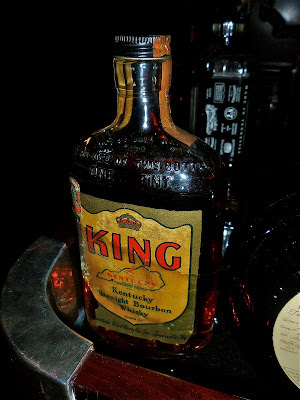
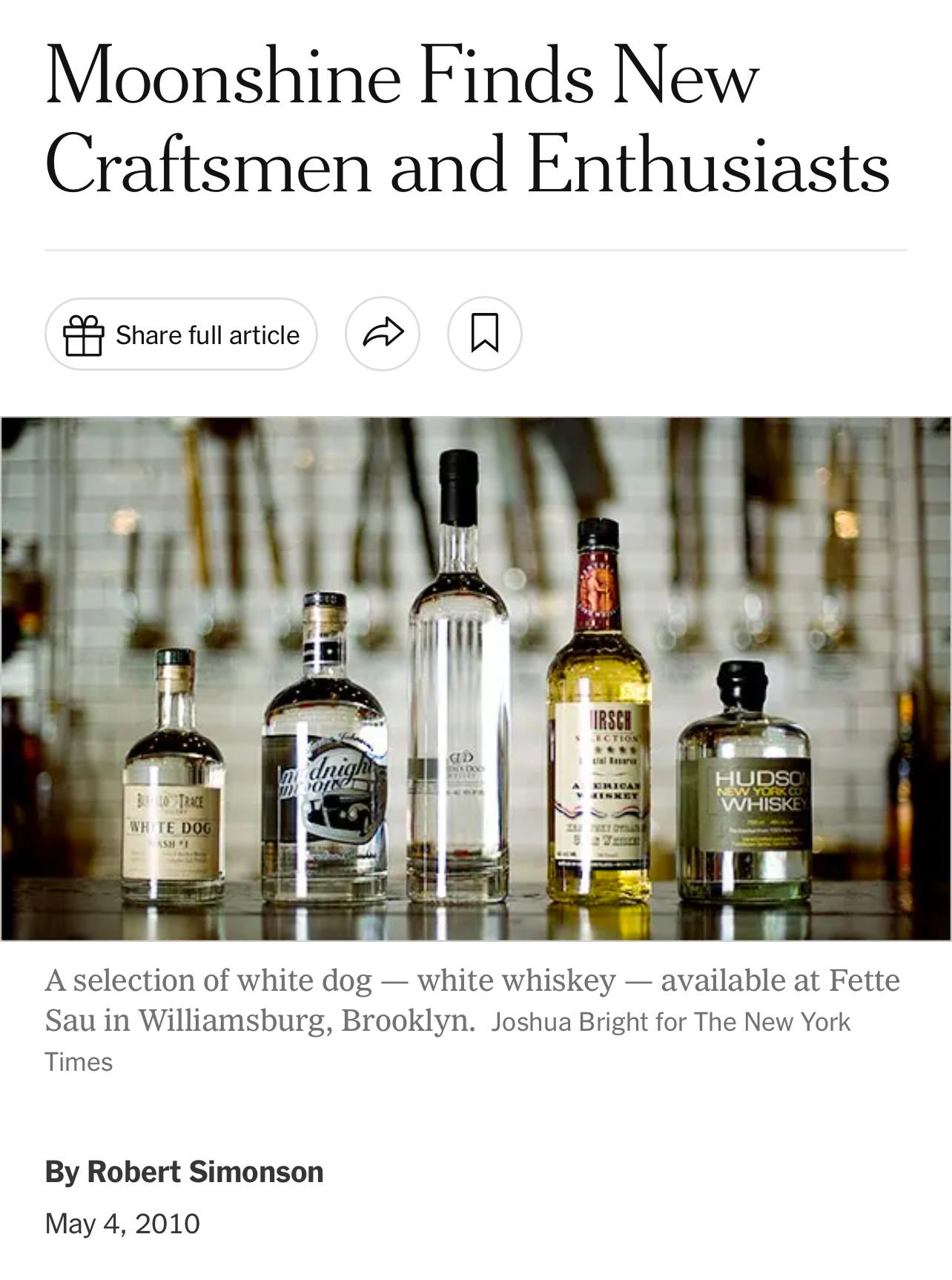
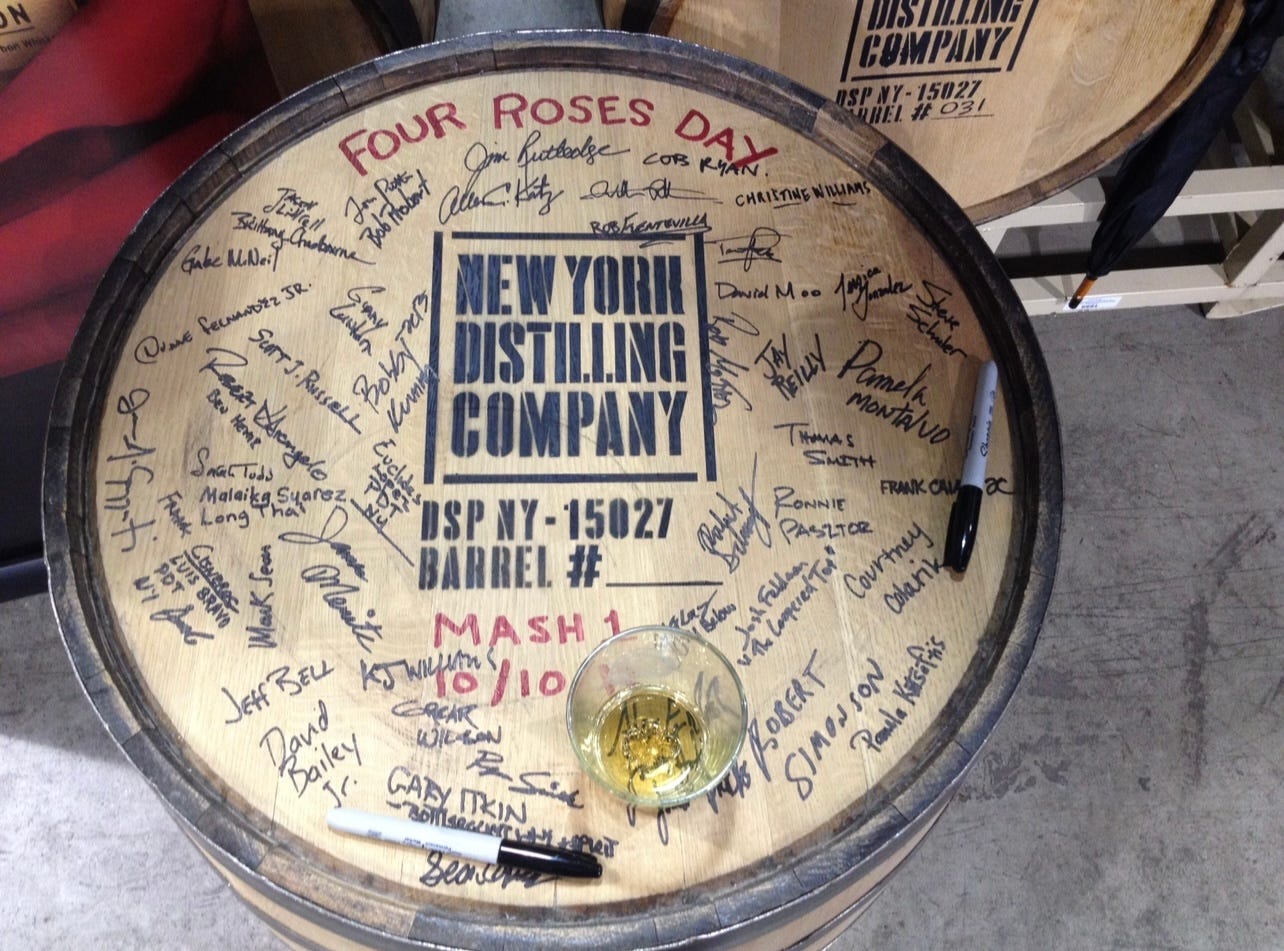
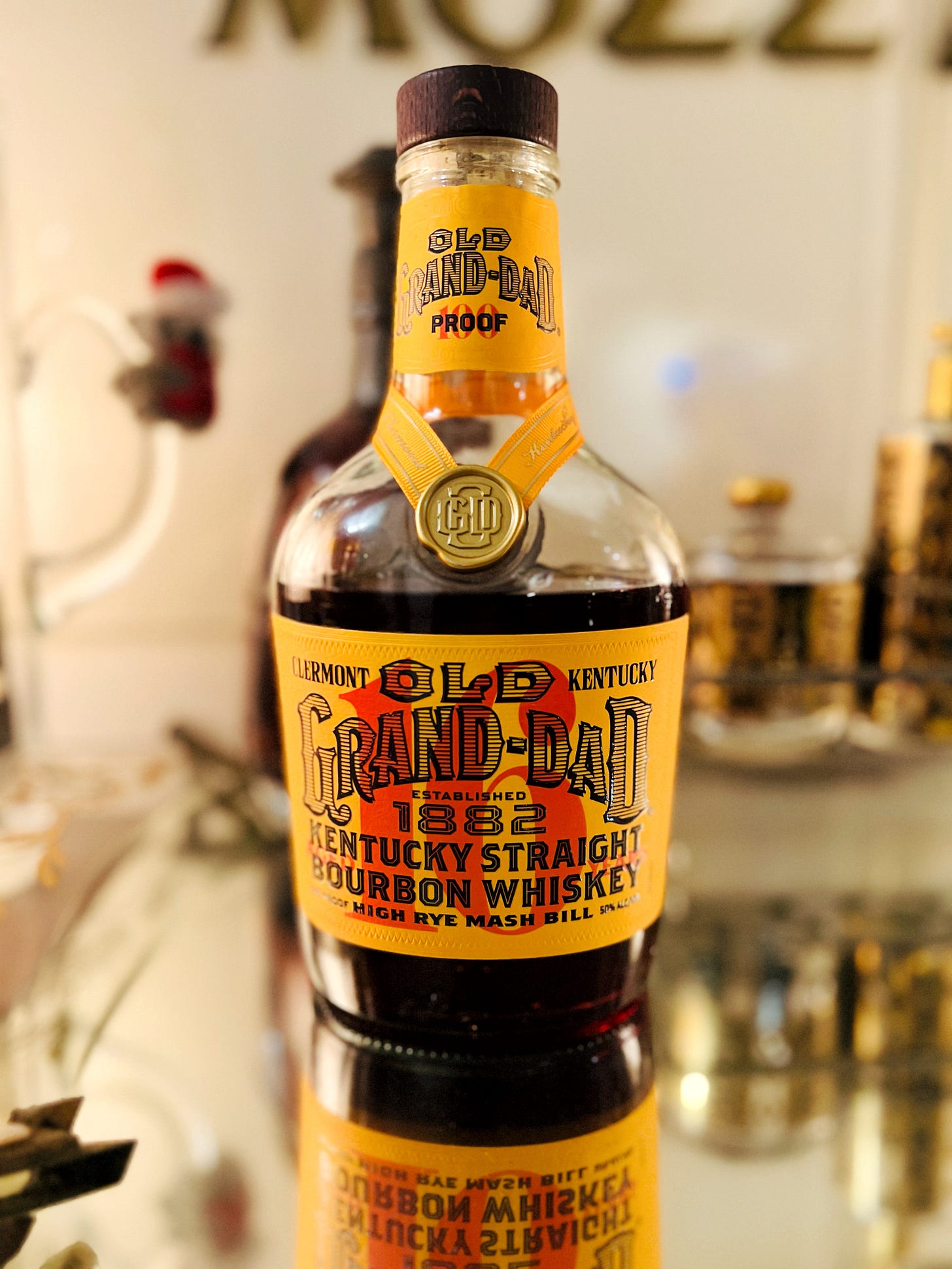

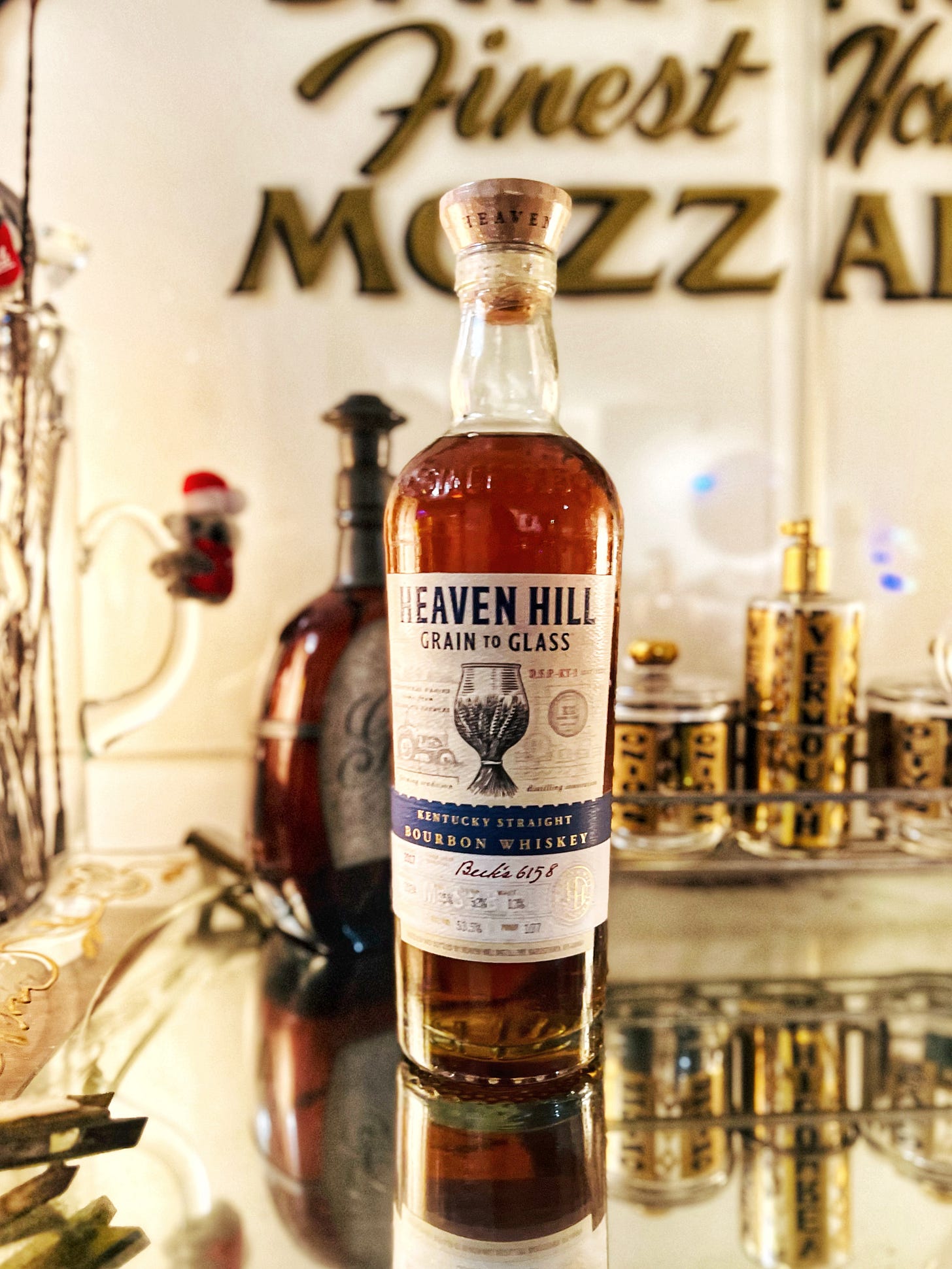

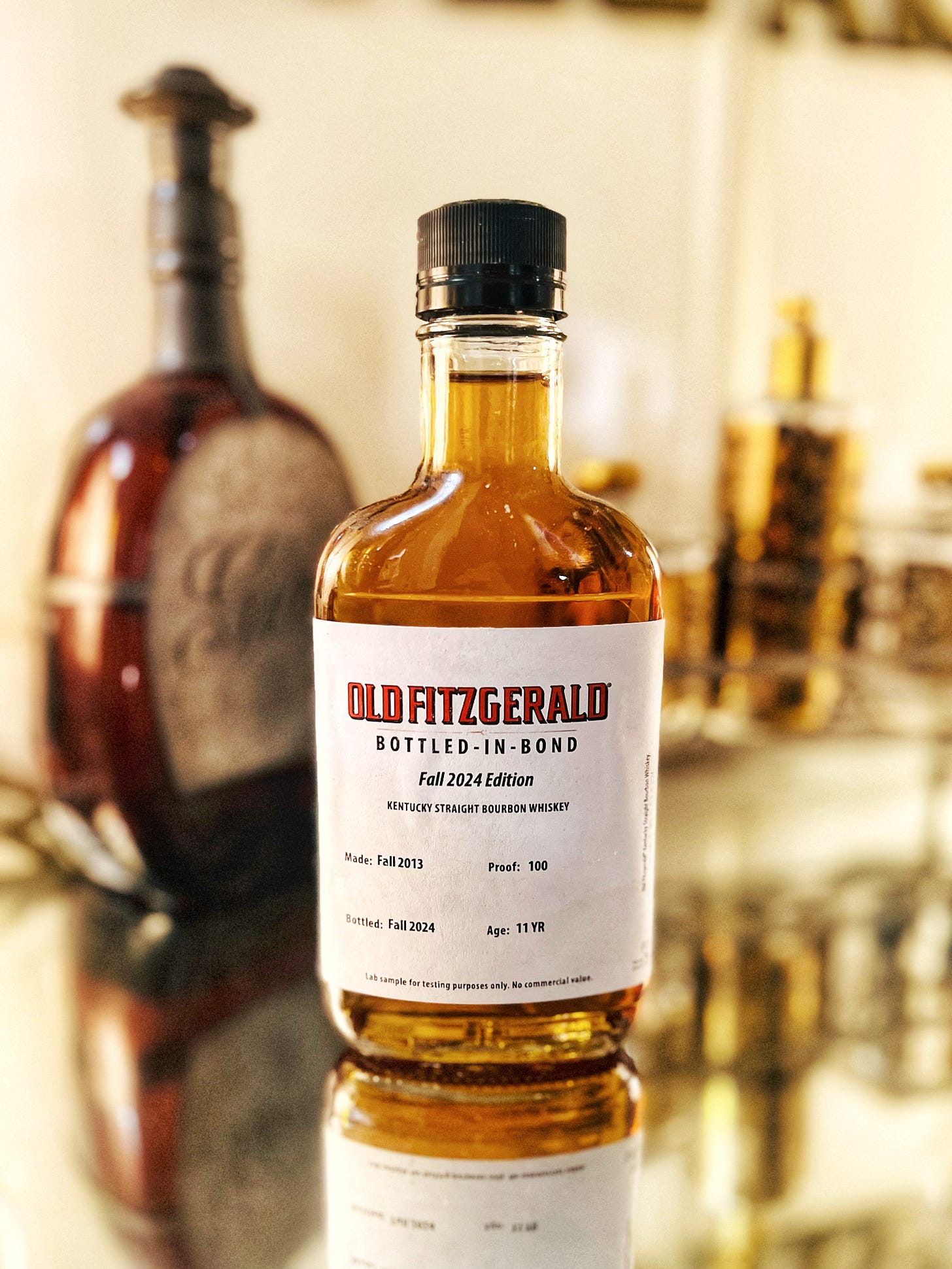

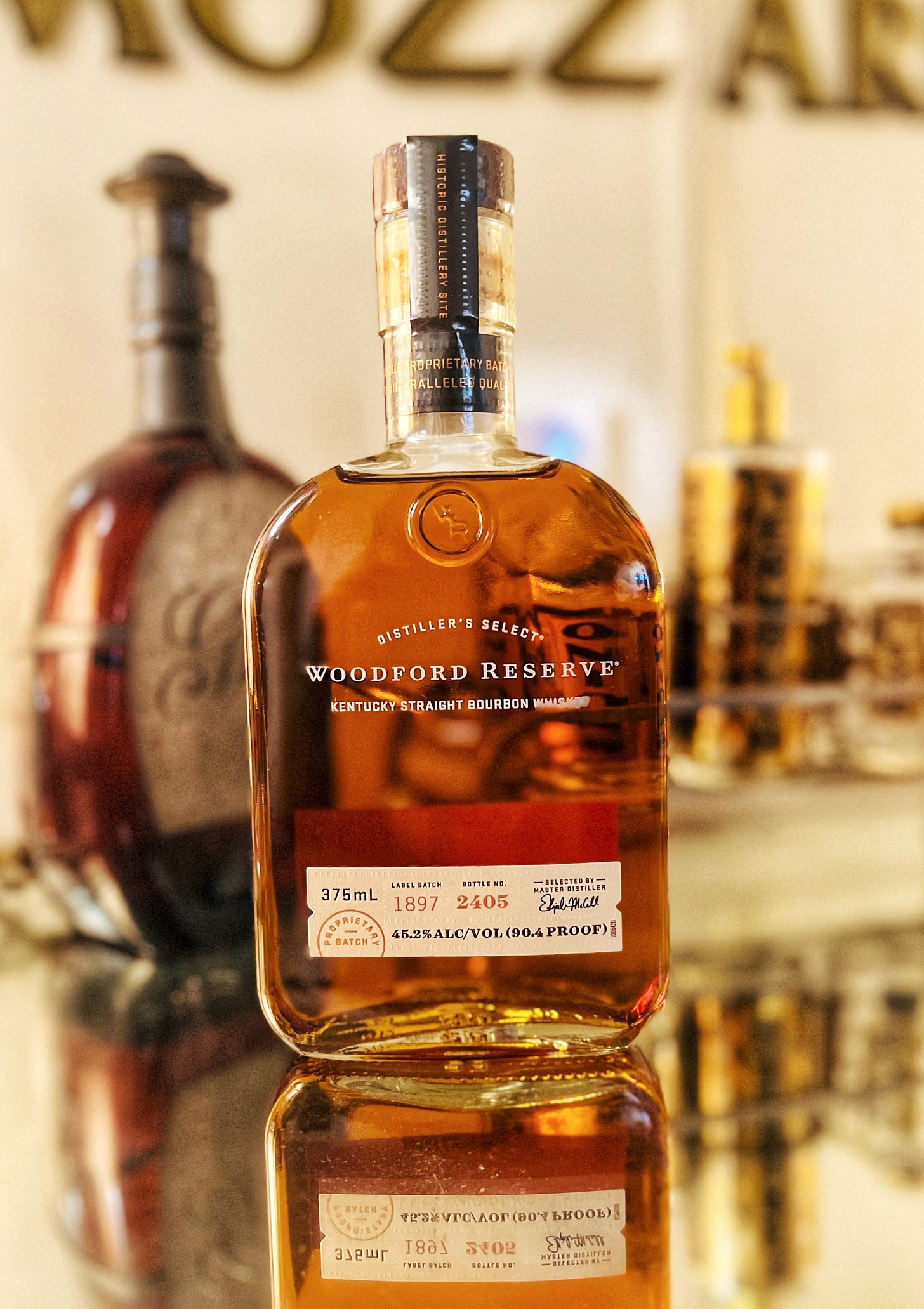
Definitely another “wish I had a Time Machine”situation. Even just during the past ten years with you. So many changes.
Damn, I miss Char No. 4. That place was the absolute best for so many reasons.